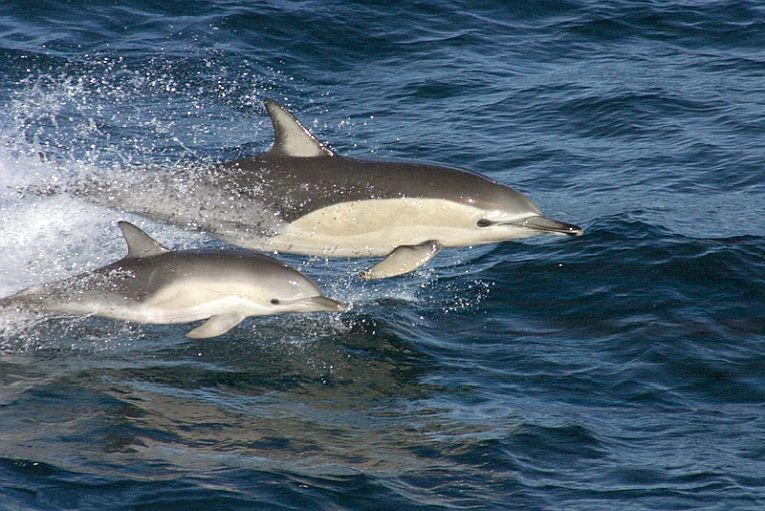The common short-beaked dolphins, Delphinus delphis, are usually seen offshore, often catching cephalopods such as Cranchids and Histioteuthids, and are so mobile that they also frequent shores in order to find certain fish, just as the inshore bottlenose dolphins do. They are locally threatened, as in the Mediterranean, but are found in most Atlantic and Pacific warm waters, reaching as far north as Norway.
In Australia, one small group inhabit an urban area in Port Philip Bay (between Geelong and Melbourne), with 10, mainly female, adults and their offspring resident. The depth here is only an average of 16m and the coast is 2.2km away, so local threats seem to endanger the future of this small group. Many other whale species, especially dolphins live in-shore, usually to gain free food near human activities, but bottlenose dolphins dominate these reports, not more oceanic species.
Suzanne Mason, Chandra Salgado Kent, David Donnelly, Jeffrey Weir and Kerstin Bilgmann are the authors of a paper about this atypical residency. It is published today in Royal Society Open Science. Common dolphins are often found in great communities, some recorded as numbering 10,000, like a mobile small town in themselves! In South Australia, the genetic structuring of the population shows up an unusual site preference for certain spots, including Port Philip Bay.
The key to the 7-year study was the ease of identification of the dorsal fin over 48 surveys. They are quite distinctive, just as those of orcas can be used for easy ID. Sexing was also simple enough with photography of the male post-anal hump (mainly of a guy called Tall Fin
) or the female mammary slits. 14 calves were born during the study although survival of these individuals wasn’t checked. Adult females seemed to be dominant in this little community of 30 of which 10 are defined as resident within the almost closed-off bay. A normal population offshore would have a 50:50 split between the sexes, which makes this group even more interesting.
The eastern part of the bay is thought to be productive enough to support this community. Schools of fish such as anchovies, sprat and horse mackerel are caught there, also supplying the little penguin,
How to protect the common dolphins in their unique location? Boat strikes in very commercial areas and pollution (particularly of mercury) are the most likely threats, as commercial fishing has been discontinued. Recreational fishing is however responsible for calf injuries and deaths. This was the situation with bottlenose dolphins after the Deepwater horizon spill off the coast of Louisiana. Oil spills near Melbourne have not been a problem, luckily.
Genetic isolation is not normally a problem with these gregarious dolphins, but the possibility is there and it could affect the ability of the group to adapt to novel factors affecting them in the Bay. As we discover new situations with any organism, we need to adjust our responses to them, and even their responses where possible. New males may well need to be encouraged to emigrate/immigrate to increase genetic variety, although there must be great interest in how the individuals there interact socially and with humans. A deep comparison with coastal bottlenose dolphin behaviours would also be interesting.










